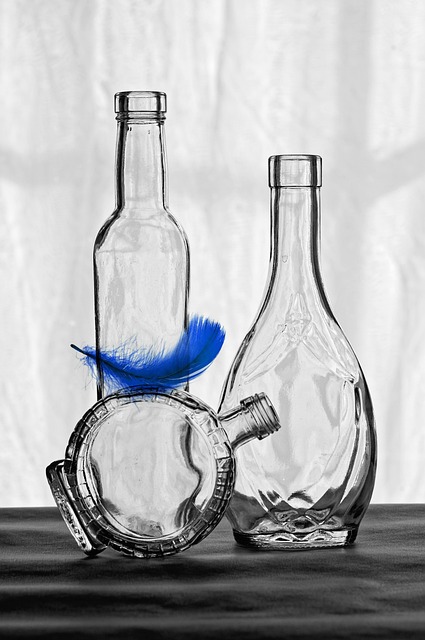Traditional film transfers face durability issues with wear, tearing, and fading over time, prompting the need for modern solutions like Direct-to-Film (DTF) printing technology. DTF prints use advanced inkjet technology to create high-quality, long-lasting films with unparalleled clarity and vibrancy, ensuring cherished memories remain intact for generations. This innovative approach democratizes access to top-tier photo preservation, with materials like PVC or polyester coated in specialized inks and adhesives for enhanced longevity. Proper care instructions are essential to preserve DTF prints' quality and lifespan, while their durability makes them suitable for diverse applications, from outdoor advertising to museum exhibits.
In an era where digital formats dominate, traditional film transfers often fall short in terms of longevity. This is where Direct-to-Film (DTF) printing technology steps in as a game-changer. DTF prints offer unparalleled durability and resistance to washing and wear, ensuring cherished memories remain pristine for generations. This article explores the science behind DTF printing, its benefits, the materials involved, care instructions, and real-world applications that highlight why DTF prints are a superior choice for long-lasting preservation.
- Understanding Traditional Film Transfers and Their Limitations
- Introduction to DTF (Direct-to-Film) Printing Technology
- The Benefits of DTF Prints for Longevity and Durability
- Materials and Techniques Used in Creating Resistant DTF Prints
- Care and Maintenance Tips for Maximizing DTF Print Lifespan
- Real-World Applications: Where DTF Prints Shine
Understanding Traditional Film Transfers and Their Limitations

Traditional film transfers, often used for creating prints from old or vintage films, have been a beloved method for film enthusiasts and archivists alike. However, these methods come with inherent limitations that can make the process challenging. One of the primary issues is fragility; traditional DTF (Direct to Film) prints are susceptible to wear and tear over time, especially when exposed to everyday handling or environmental factors like moisture and dirt. This vulnerability makes them prone to fading, tearing, or even complete loss of image quality, rendering them less durable for long-term preservation.
Moreover, the washing process can be particularly detrimental. Standard cleaning methods often require soaking or direct contact with water, which can cause the emulsion on the film to dissolve, leading to significant damage. These limitations highlight the need for innovative solutions, such as modern techniques that offer enhanced durability and resistance to everyday wear and tear, ensuring that precious cinematic memories remain intact for generations to come.
Introduction to DTF (Direct-to-Film) Printing Technology

DTF (Direct-to-Film) Printing Technology is a revolutionary process that has transformed the way we preserve and enjoy our cherished memories. This cutting-edge method allows for high-quality, long-lasting film transfers that are resistant to the test of time and everyday wear and tear. Unlike traditional printing techniques, DTF prints directly onto the surface of the film, creating an indelible bond that ensures the vibrant colors and intricate details remain intact for generations.
By leveraging advanced inkjet technology, DTF prints offer unparalleled clarity and precision, making them a game-changer in the field of photo preservation. The direct application of pigment inks onto the film’s surface creates a seamless fusion, resulting in prints that are not just visually stunning but also durable enough to withstand regular handling and even washing without compromising quality. This innovative approach has democratized access to high-quality film transfers, enabling folks to easily transform their favorite memories into long-lasting keepsakes.
The Benefits of DTF Prints for Longevity and Durability

Direct-to-film (DTF) prints offer a revolutionary approach to ensuring long-lasting film transfers. Unlike traditional printing methods, DTF technology applies ink directly onto the film surface, creating a seamless fusion that enhances durability and longevity. This innovative process is particularly resistant to washing and wear, making it an ideal choice for preserving precious memories and cinematic art.
The benefits of DTF Prints are multifaceted. First, they provide superior color accuracy and vibrancy, ensuring that the original film’s aesthetic is meticulously preserved. Additionally, the direct application of ink fortifies the bond between the print and the film base, reducing the risk of fading, cracking, or peeling over time. This durability translates to a longer lifespan for your cherished films, allowing future generations to enjoy them without compromise.
Materials and Techniques Used in Creating Resistant DTF Prints

The creation of long-lasting film transfers, resistant to washing and wear, involves a meticulous process utilizing advanced materials and techniques. Key components include high-quality, durable plastics like polyvinyl chloride (PVC) or polyester films, which offer exceptional strength and resistance to environmental factors. These materials are coated with specialized inks and adhesives that enhance their longevity and adherence.
Techniques such as heat pressing and UV curing play a pivotal role in the durability of DTF Prints. Heat pressing ensures that the ink thoroughly fuses with the substrate, preventing fading or cracking over time. UV curing further strengthens the bond by exposing the printed area to ultraviolet light, hardening the ink and making it resistant to washing and wear. This combination of robust materials and sophisticated printing methods results in vibrant, long-lasting images that remain intact even under rigorous use.
Care and Maintenance Tips for Maximizing DTF Print Lifespan

To ensure your DTF (Direct-to-Film) prints last for years to come, proper care and maintenance are essential. Avoid exposing them to direct sunlight for prolonged periods as UV rays can degrade the ink and make colors fade faster. Store your prints in a cool, dry place, away from heat sources like radiators or direct heat. Consider using protective cases or frames to keep them safe from physical damage and dust.
Regular cleaning is another crucial aspect. Use a soft, lint-free cloth to wipe down the surface gently, avoiding any harsh chemicals or abrasive materials that could scratch or stain the print. For more stubborn marks, use a mild soap solution with warm water, but be sure to thoroughly rinse and dry afterward. Remember, gentle handling and careful preservation will contribute significantly to maintaining the vibrancy and longevity of your DTF Prints.
Real-World Applications: Where DTF Prints Shine

In various sectors, Direct-to-Film (DTF) prints have proven their mettle as a robust and versatile solution. Their resistance to washing and wear makes them ideal for outdoor advertising, where billboards and transit ads are constantly exposed to varying weather conditions and frequent cleaning routines. The durability of DTF inks ensures that these prints remain vibrant and legible for extended periods.
Moreover, DTF technology finds application in museum exhibits and archives, safeguarding historical documents and artworks from damage caused by handling and environmental factors. Its ability to produce high-resolution, long-lasting images makes it a preferred choice for creating replicas of precious artifacts, ensuring their longevity for future generations to appreciate.














